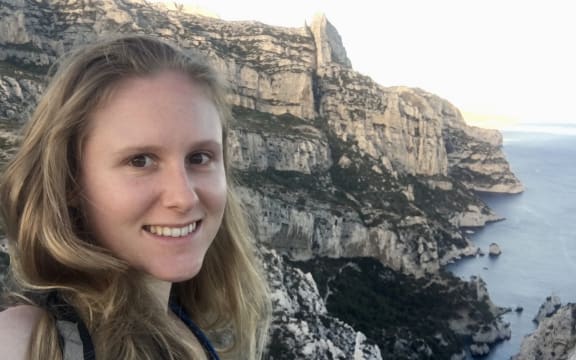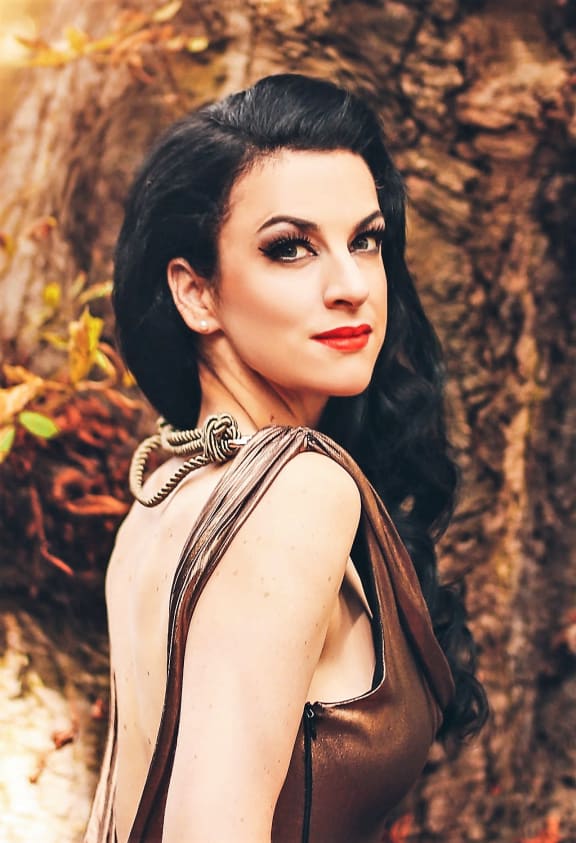In Heavenly, Mahler’s Fourth Symphony - a picture of the perfect childhood - is paired with Gabriella Smith's Tumblebird Contrails, a hauntingly evocative work inspired by the hallucinatory sounds of the Pacific Ocean.
Performed by New Zealand Symphony Orchestra conducted by Miguel Harth-Bedoya

American composer Gabriella Smith Photo: Supplied by NZSO
American composer Gabriella Smith a rising star among contemporary composers. She loves being in nature and found inspiration while hiking in the National Park at Point Reyes in California. She had stopped to rest, and sitting in the sand at the ocean’s edge, began to listen to the hallucinatory sounds of the Pacific Ocean and watching a pair of ravens playing in the wind, rolling, swooping, diving, soaring—imagining the ecstasy of wind in the wings—jet trails painting never-ending streaks across the sky.
The title of Gabriella Smith’s piece Tumblebird Contrails, is a Kerouac-inspired, nonsense phrase invented to evoke the sound and feeling of the music.
Incorporating the sounds of nature is Gabriella’s way of raising awareness for the destruction of our biosphere, which she believes is the biggest issue facing the planet in our time.
Performed by soprano Madeleine Pierard with the New Zealand Symphony Orchestra conducted by Miguel Harth-Bedoya

Soprano Madeleine Pierard Photo: Supplied by NZSO
“No music on earth can compare with ours…The angelic voices lift our spirits and all things awaken to joy!” sings Madeleine Pierard.
From the “ching ching!” of Christmas sleigh bells in the first movement, to the beatified soprano entrance in the finale, Mahler’s Fourth is a picture of the perfect childhood.
In the final movement, Mahler incorporated a child-like song – his own ‘Das himmlische Leben’ (The Heavenly Life). By doing this he faced a unique challenge: how to avoid the end of the symphony being an anti-climax.
Instead of building to an epic finale, Mahler’s solution was for the symphony to become simpler and more modest as it goes on, shaking off the shackles of sophistication movement by movement. The effect is a feeling of lightly ascending heavenwards.
By contrast, the second movement has one foot in the grave. In this grotesque scherzo, the concertmaster plays a special violin tuned up a tone. The shriller sound and the dance-like episodes provide a folky, fiddle feeling. This part of the music was reportedly inspired by an Arnold Böcklin artwork called Self Portrait with Death Playing the Fiddle, where death hovers eerily over the artist’s left shoulder.
The third movement reminded Mahler of his mother’s smile. It’s a peaceful yet poignant set of variations on two themes, which Mahler described as “divinely gay and deeply sad”. It contains a loud E major chord which is said by some to represent the gates of heaven.
In the fourth movement, the soprano’s entrance is like the descent of an angel. All the musical motifs and moods from earlier in the work come together to create a sense of heavenly rest.
Recorded 10 November 2022, Michael Fowler Centre, Wellington by RNZ Concert
Producer: David McCaw
Engineer: Darryl Stack

